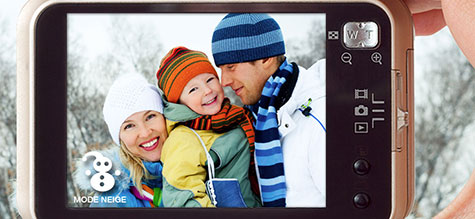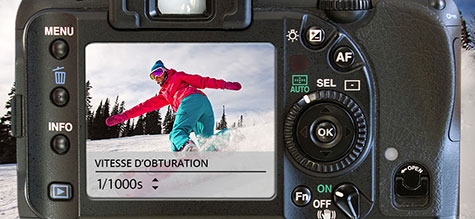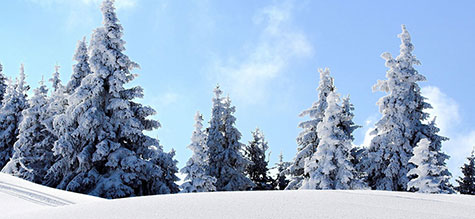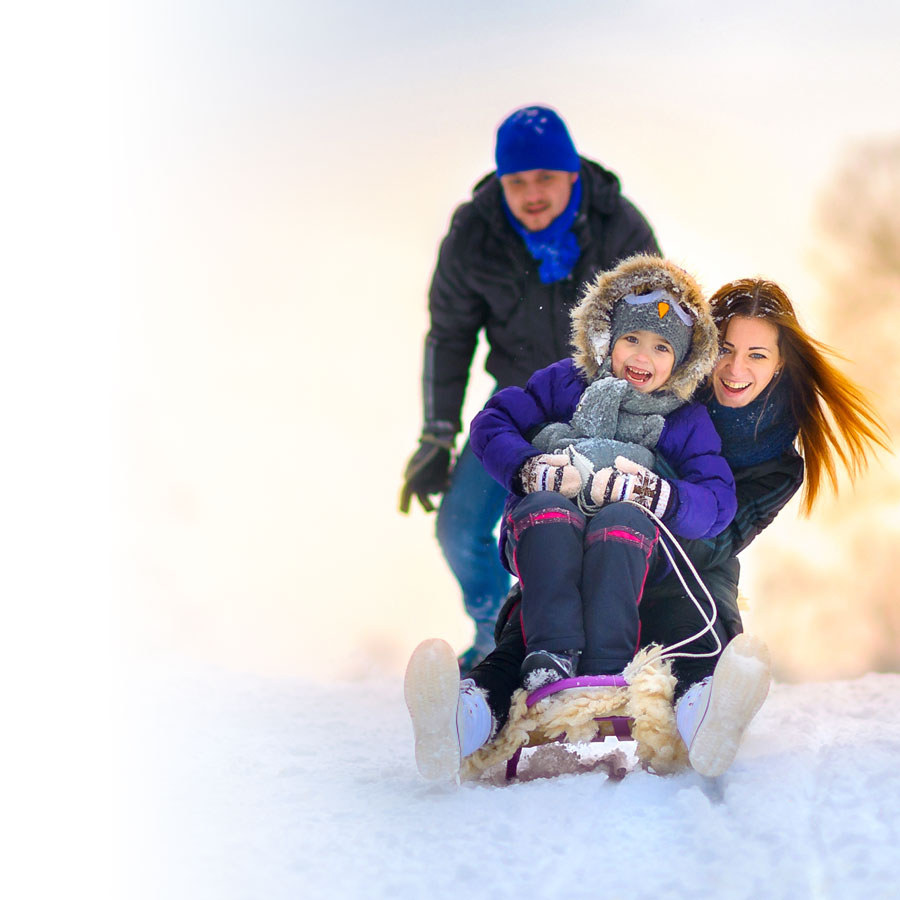Taking great winter photos can be challenging for amateur photographers. The glare of the snow and fast-moving subjects don’t make things any easier! Here are our tips for brilliant winter photos.
Travel light
You’ve decided to hit the slopes,go hiking, or even just play outside, and you want to capture it all. Don’t weigh yourself down by filling your bag with equipment. Leave your tripod and most of your lenses at the cottage. Take only what is strictly necessary: a spare battery, an external flash if you plan on taking close-ups, a wide-angle lens and a zoom (70-200) in order to take great pictures, whatever the situation.

Choosing the right settings
The snow not only dazzles your eyes, it is also reflected onto your camera’s light sensor, which registers it as an anomaly and automatically compensates for it by underexposing your pictures. As a result, the snow looks dirty and the colours come out dull. To get around this problem, switch your camera to “Snow” mode. If this option does not appear in your settings, manually configure your camera so that it underexposes the shot by selecting “Standard” mode (“P”), then setting the exposure using the “±” button. Set your exposure at+1 and check the result. If the image still doesn’t seem right, increase the exposure level until you’re satisfied.

Taking dazzling portraits
The light that reflects off the snow also allows you to take great portraits, especially when the sky is grey. Not only will this prevent your subject from being blinded by the snow, but you will also benefit from diffused light that you can add to by using your built-in flash. Not just for use in dimly lit spaces, this flash can also be used in broad daylight to help your subject stand out from the background. The end result is quite different, as long as you stand at least three meters away from the subject so that they’re sufficiently lit by the flash. Finally, pay attention to the background: choose fir trees, a mountain ridge or even the sky, rather than the snow, which has a tendency to “dwarf” your subjects.
Stop time
Winter sports are usually fast-paced, and you’ll need to be ready if you’re going to take action shots! There are some techniques you can use to give the effect of speed, like with hockey players and snowboarders. For example, to photograph a snowboarder, find a spot where you can see him or her coming from afar. If you select the “Sports” mode on your camera, you’ll be able to capture the snow spray trailing behind him or her. Otherwise, set the shutter speed to 1/125, wait for your subject to pass in front of the lens, then snap him or her while tracking their movement. Your shot will feature a motion blur: you’ll be able to clearly make out the snowboarder, but the backdrop will be blurred, creating an impression of speed.

Pick your dream surroundings
Before doing anything else, look around you to find the best shooting spots. Factor natural light into your decisions, as well as the time of day (morning light will be brighter, while evening light will be softer). A cloudy sky is ideal for portraits. Finally, snap photos while giant snowflakes are falling: it'll give a dynamic quality to your landscapes.


